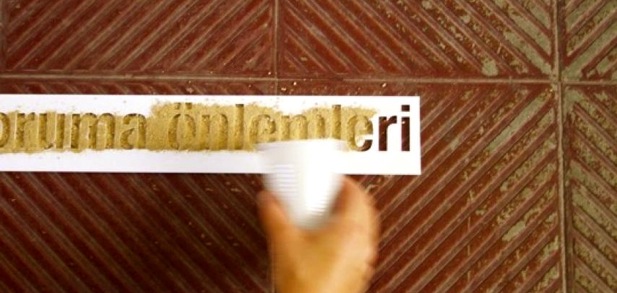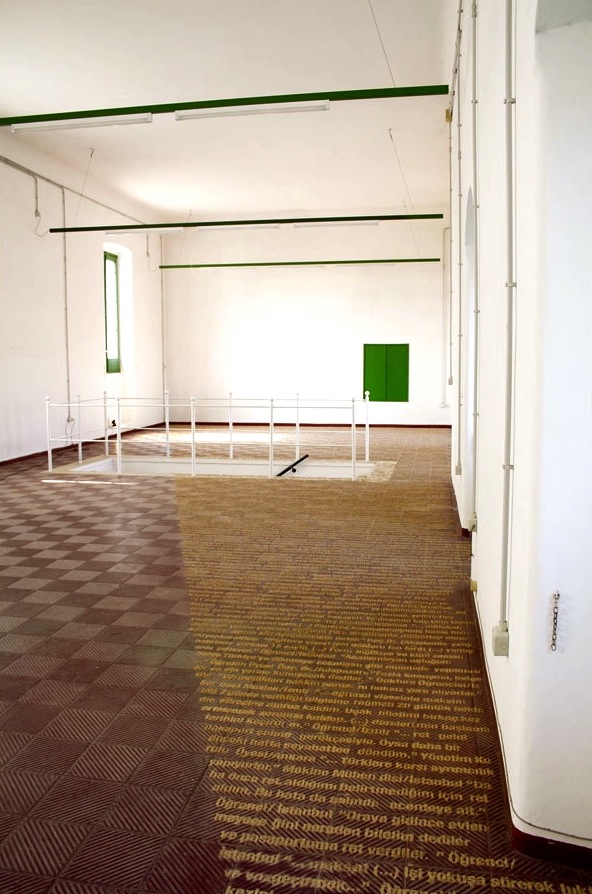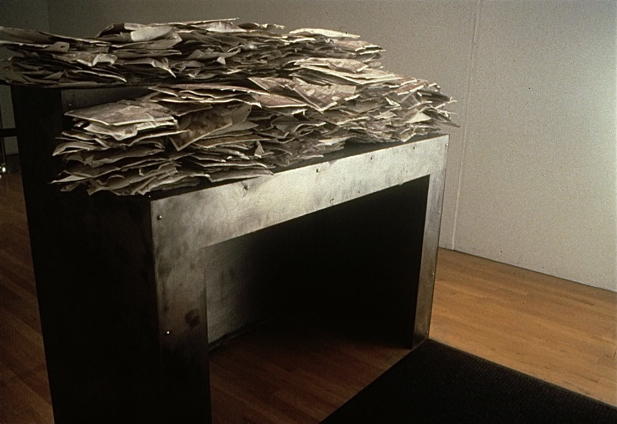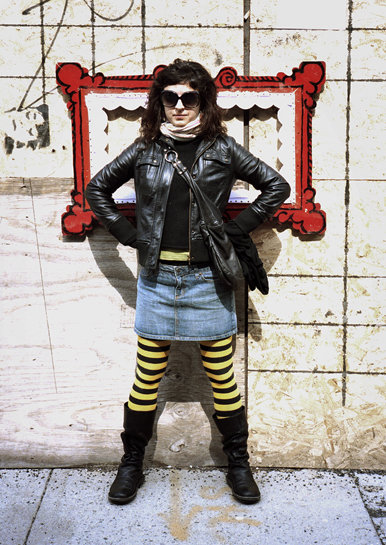First published on THE MANTLE
For T., H. & J.

[The Wait, 1979]
“Every era has to reinvent spirituality for itself… In the modern era, one of the most active metaphors for the spiritual project is art.” – Susan Sontag
There is a question. It always begins with a question. But the question is markedly different for the artist and for the reader. In the painting, there are no answers. Hélène Cixous remarks: “A desire was seeking its home. I was that desire. I was the question. The question with this strange destiny: to seek, to pursue the answers that will appease it, that will annul it. Yet what misfortune if the question should happen to meet its answer! Its end!” Such are the demands of art. The answers are not included in the work; the work is simply the external result of a process that takes a minute and a lifetime at the same time. The procedure is always rigorous but doubtful. What is art? The reader asks, and Sarah Kofman answers with duplicitous clarity: “The question itself is replete with metaphysical presuppositions.”
Is this not the subordination of art to orders of truth that belong to science and knowledge? One does not know paintings, unless that is, one is an art historian. In paintings, things appear and disappear simultaneously, leaving behind them only traces of objects that were once familiar, only to be devoured by the painting. The work of Bahraini painter Nasser Al Yousif belongs to this kind of paintings that cannot be read by dissecting the work into units of meaning and significance; they are construed as whole universes. The real difficulty with his work does not necessarily lie with the innovative technique and the colorful but yet obscure references to the traditional culture of the Arabian Gulf that can mislead the viewer into thinking that he is confronted with folklore painting in the manner of a visual documentary.
At the center of his artistic production rests a cautious journey through the materiality of the environment in which his work unfolded: Earth colors, sands, woods, Arabian doors against Persian and Indian pastel colors, bamboo baskets, dances and drums. And Bahrain is all of that. The poet Qassim Haddad understood this better than any Bahraini of his generation: “We are not an island, except to whoever sees us from the sea.” You must travel to Bahrain for two reasons: First you must discover that the border of the waters encircling the island is nothing but a geographical convention; Bahrain is in the waters and is the waters. Second, you must realize that the colorful world of Al Yousif is nowhere to be found in this formless extension of sand and asphalt. Where did the painter learn to paint this country? Where is this country?
Did he imagine it? That would be an unnecessary burden for someone who was simply asking questions; for someone who kept asking questions about the colors of this island even after his eyes could no longer see the fulgurant and intoxicating light of the place where Mesopotamian mythology claims that the sun itself was born. To have painted scenes of history, to have painted the past, Nasser Al Yousif must have then embodied the historicist consciousness of a modernist, but that he was not. Although the word Modernism often has a negative connotation nowadays in the Arab world, it simply describes those painters trained in the European tradition and that learnt to see their native lands with the eyes of Delacroix and Monet in Algeria. First there were the impressionist landscapes and then the naïve portraits of the peoples of the Orient.
In this tradition, the question of art would be overarching because the Orient as an object of composition would reveal a plethora of ideological gestures that carried within themselves the snake of the tree of knowledge: Art would want to know itself, and to know itself meant to ask what is art, and to answer the question would mean to lead art back to its very beginning: The primal world of formless physicality yet rising out of a world devoid of magic; the gap between the fresco of the Ladies in Blue at Cnossos and Marcel Duchamp. Al Yousif’s procedure stands out of this tradition of modernism both in its Western and Arab setting: He created a universe of color and form – rather than content and form – from the very womb of the land where for three millennia the sounds of the European Orient and the exotic East met at once.
Contemporary artists in the Gulf region live in that mortal contradiction of wanting to soak in aluminum and neon the same colors that Al Yousif was committed in bringing to life; adopting a reckless modernity of which they have never been part, except, alas, in the modernist imagination. The melancholy inherent in the modernist Arab painting of depicting a world that is vanishing in the moment it is being painted or has already vanished, is absent from his work because he is not painting out of the vaults of the grand past; here understood as the rupture or discontinuity between memory and the present, so that everything is to be immortalized in a last inward gaze before everything evaporates. Memory – in orality and sound – is an overwhelming presence in his work as a present that never ceases from making itself present.

O Lord, Safeguard this Country, 1983
In one of his best-known works, “The Wait”, being the first artist in the Gulf to work on acrylic, a generation before conceptual artists in the region discovered it; he stages a human drama in an archetypal manner: A bird in its cage is surrounded by restless felines, and both have waited long for the inescapable end – freedom or death. Art is always searching for humanity, and the philosopher Franz Rosenzweig insists that what is the purely human element in art and in life is that which is equal and common to us all, an element which is awakened by and in tragedy.
In her reading of Rosenzweig, conceptual artist Doris Salcedo tells us:“Rosenzweig said the hero of Greek tragedy embodies the solitary self, cut off from all relations to the world and his destiny is marked by two fundamental experiences: the encounter with Eros and the encounter with death. Death is silence, the impossibility of dialogue. Art is communication without words; art is silence. Art is also mediation; and therefore it enables a self enclosed in his own tragedy to awake another self, who is just as solitary.” Out of the conflict between the predator and the victim in the painting, is born a struggle pointing towards a humanizing lesson: In violence and conflict, there are no victories, there are no victors; there are only victims. Nameless victims. Faceless victims. And it is the realization that not to recognize personhood and identity in difference is already a form of violence.
But the message of Al Yousif is nowhere near the pathos of the irreversible – his dramas are suspended before their untimely finality, and without hints at redemption to the very last moment, creating a tension manifesting that humanity is still possible. No wonder that in the language of Rosenzweig, the Orient is referred to as “Morgenland”, the land where the sun rises, opposed to the “Abendland”, or nocturnal lands of Europe. And Bahrain is like this too, as Cixous exclaims: “Let yourself go! Let go of everything! Lose everything! Take to the air. Take to the open sea. Take to letters. Listen: nothing is found. Nothing is lost. Everything remains to be sought.”
In his acrylic from 1983, “O Lord, Safeguard this Country” he depicts an optical theater in which Islamic motifs of his earlier piece, “The Land of Peace” (1979) reappear embedded architecturally, surrounded by fluttering birds. In this painting, the artist is expressing his view of how in moments of hopelessness, of disunity, of violence, it is but the armor of the heritage what will protect the nation, any nation. But again it is easy to be misled: One could be fooled into thinking that by heritage it is meant a specific religious tradition or even cultural uses; but the vision of the painter goes further: By the heritage he articulates what is expressed in “The Wait”; heritage means here what is common to us all, the purely human element that is awakened in the darkest hours.
It would be completely mistaken to understand Nasser Al Yousif’s pictorial work as either representational or literary – and both motifs are identical – but rather, he is doubling and upsetting the layers of correspondence between the world of the living and the colorful universe that he created with his own hands out of – literally – sand and soil. Sarah Kofman concludes a discussion about the nature of contemporary painting by saying what best articulates Al Yousif’s careful observation and exploration of Bahrain as it disclosed itself to him: “What we call representational art can no longer be thought of as the mere repetition of a preexisting model but only as an originary double that causes all our assumptions to waver – our assumptions about the identity of the “object” as well as that of the subject – by doubling every “real” thing with its unwonted and fascinating “presence.”

[Unity, 1982]










